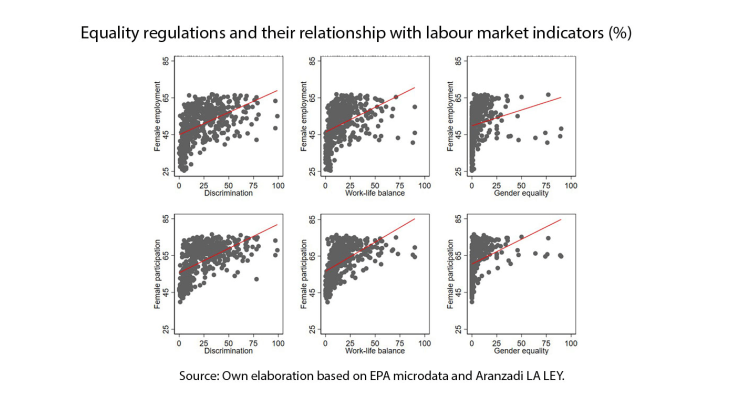Is Equality Regulation Effective in Reducing Gender Gaps in the Labor Market? Quantification and Evidence for Spain
Working Paper Series no. 943. This article quantifies, through text analysis, when, at what rate and in what regions, Spanish administrations have adopted regulations aimed at achieving gender equality, improving work-life balance or combating harassment. The study covers the period 1996-2022, identifying both central government legislation and legislation in each of the regions. The analysis, therefore, organises the information in a panel format. The indicators reveal the high degree of heterogeneity in terms of the legislation in the various related areas, with non-discrimination legislation being the most developed and frequent. They also reveal differences between regions, with Andalusia and Catalonia being those in which most legislation has been adopted. The database is then used to investigate the relationship between legislative changes and labour market inflows for women in Spain. Our correlation analysis exhibits a positive relationship between the volume of legislation passed in the areas of interest, such as non-discrimination policies, and indicators of both employment and female labour force participation.
